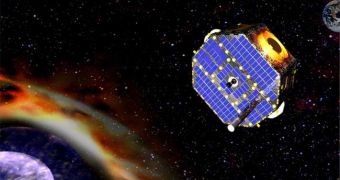According to the latest data sent back by a NASA spacecraft, it would appear that the amount of activity going on at the edge of our solar system is a lot higher than anyone first calculated.
Using data from the American space agency's Interstellar Boundary Explorer (IBEX) spacecraft, the researchers were able to determine that conditions at the boundary of the heliosphere change constantly and dramatically.
The heliosphere is the protective layer that the Sun creates around the solar system, which the purpose of shielding the planet within from the influence of much more dangerous radiation, such as cosmic rays.
The series of observations that were conducted using IBEX also revealed the loosening of a knot in a strange energy ribbon, the team behind the investigation reports.
The finding is very important, as it could help space experts design long-range space missions at are better than ever at withstanding the difficult conditions the Universe at large throws at them.
The main target of the IBEX probe is the interstellar boundary region, which is the area where our solar system interacts most with the rest of the galaxy.
Scientists say that spacecraft is capable of conducting this type of measurements by counting the amount of particles called energetic neutral atoms (ENA) that whirl past.
ENA are created only in this boundary region, and what IBEX does is it creates all-sky surveys, imaging the entire sky in search of variations in ENA characteristics.
“Our discovery of changes over six months in the IBEX ribbon and other neutral atoms propagating in from the edge of our solar system show that the interaction of our sun and the galaxy is amazingly dynamic,” explains scientist David McComas.
“These variations are taking place on remarkably short timescales,” adds the expert, who is the principal investigator of the IBEX mission. The spacecraft launched in 2008.
McComas also holds an appointment at the San Antonio, Texas-based Southwest Research Institute (SwRI). Details of the new study appear in this week's issue of the esteemed Journal of Geophysical Research – Space Physics.
“As the heliosphere shrinks, it actually turns out it's a less good shield. More of these galactic cosmic rays can find their way in,” the expert said on September 30 in a conference.
The finding has important consequences because it means that more radiation from outside our solar system are finding their way towards the planet, including Earth.
The possible effects that this elevated amount of radiation may have on life here are still being analyzed by scientists, Space reports.

 14 DAY TRIAL //
14 DAY TRIAL //